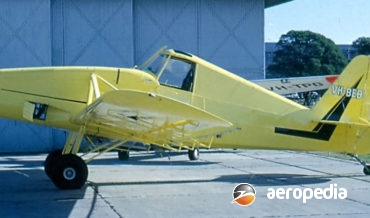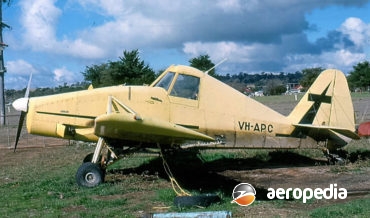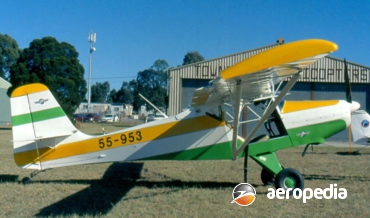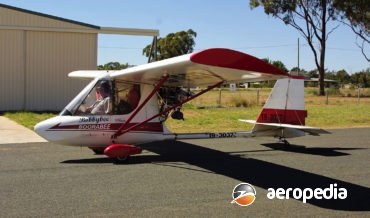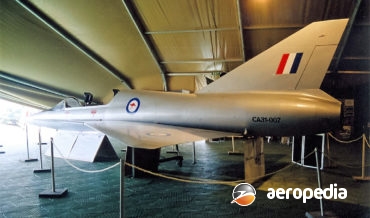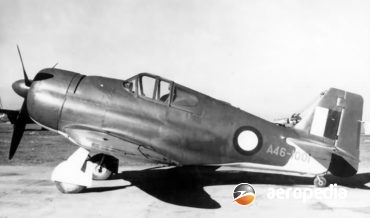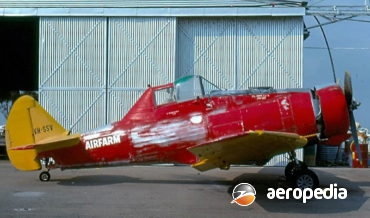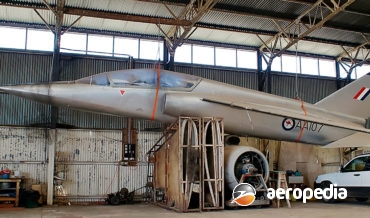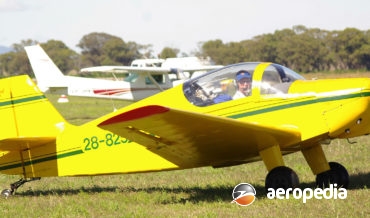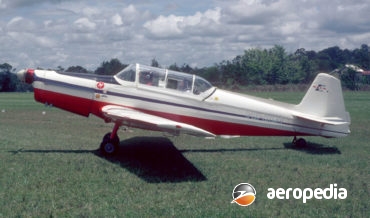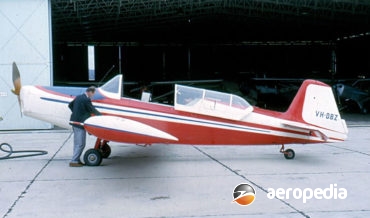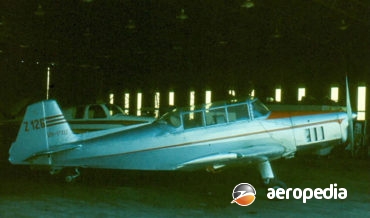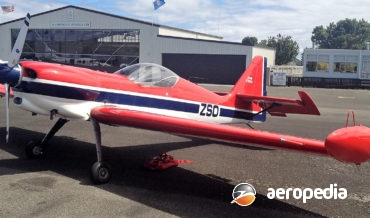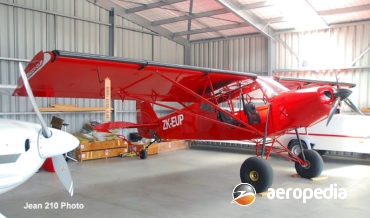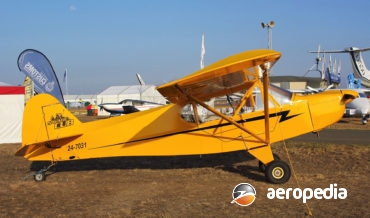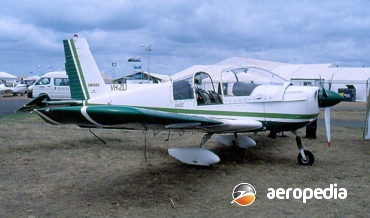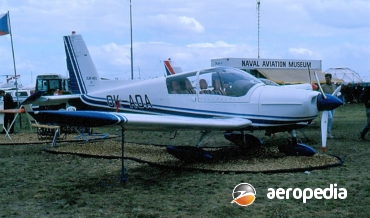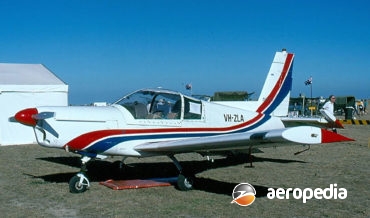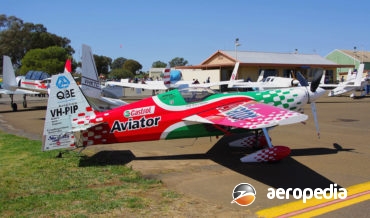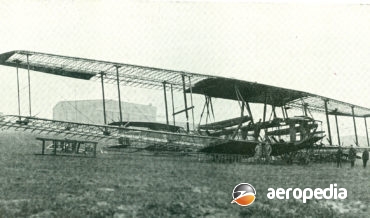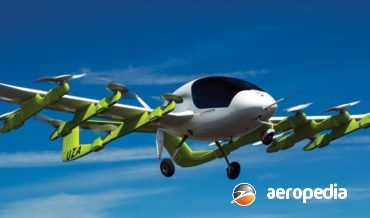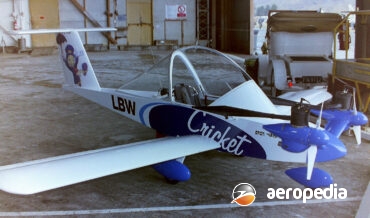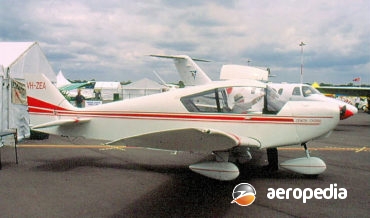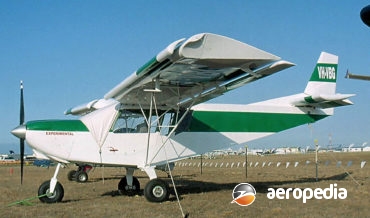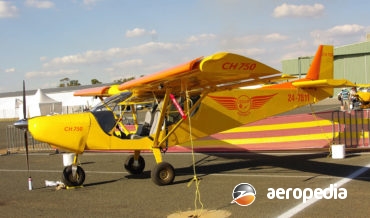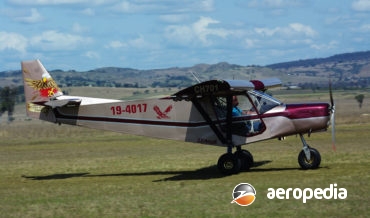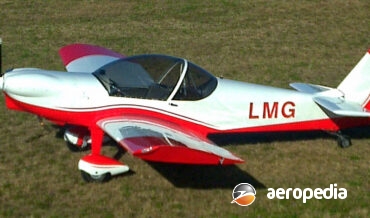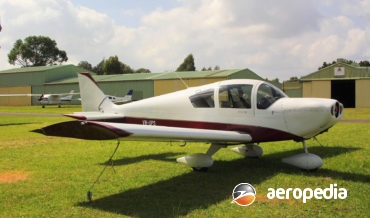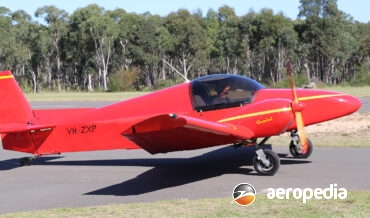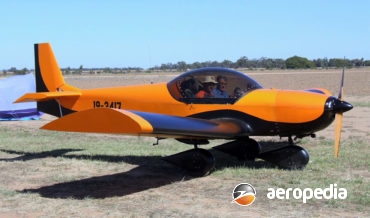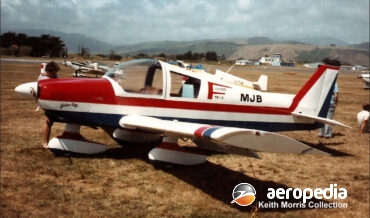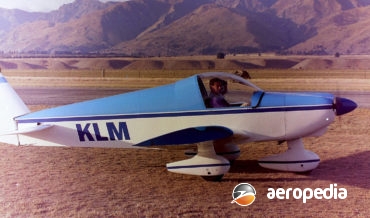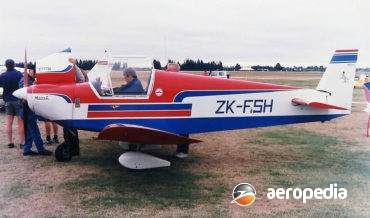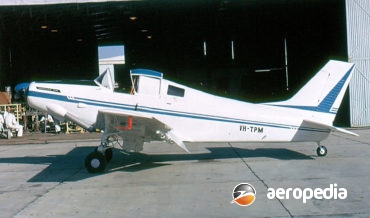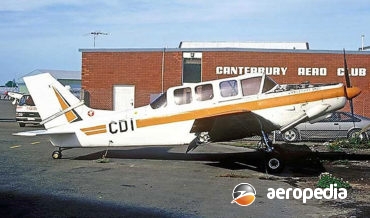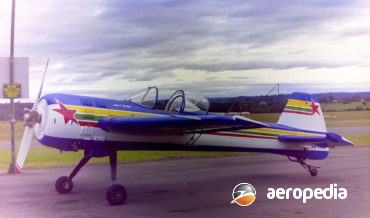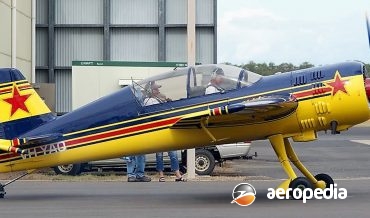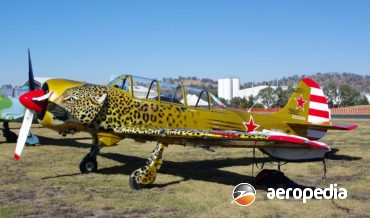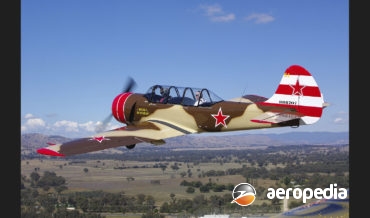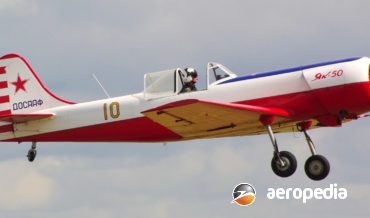All Contents
Contents
The Call Air Model B-1 agricultural aircraft was a development of the smaller A-9 series and was of similar configuration, being designed and manufactured by the Inter Mountain Manufacturing Co of Wyoming, USA (IMCO).
David C. Eyre
- May 17, 2019
The Call Air A9, which first appeared in Australia in the mid-1960’s, was developed from a line of agricultural aircraft originally built by Call Air Inc of Afton, Wyoming.
David C. Eyre
- May 17, 2019
In the mid 1980s Mr Dan Denney formed Denney Aerocraft Co in Boise, Idaho to build a two-seat ultra-light aircraft known as the Kitfox, and in the first year 21 kits were delivered.
David C. Eyre
- May 17, 2019
The Boorabee is an ultralight which could be built in either single-seat or two-seat forms.
David C. Eyre
- May 17, 2019
The CA-31 was one of a series of projects designed by the Commonwealth Aircraft Corporation to meet a requirement of the RAAF for a supersonic trainer and light attack aircraft, being designed to facilitate pilots proceeding from the Macchi MB-326H to the GAMD Dassault Mirage IIIO, being expected to be
David C. Eyre
- May 17, 2019
In an attempt to increase the performance of the indigenous Boomerang fighter, consideration was given to the increase in the power of the engine installed and to this end, as the Twin Wasp engine then fitted was not supercharged sufficiently to permit adequate high-altitude operations, it was decided to obtain
David C. Eyre
- May 17, 2019
The Ceres (the God of Fertility) was developed from the Wirraway trainer of World War II, which had been built at the Commonwealth Aircraft Corporation’s plant at Fishermens Bend, Vic, between 1939 and 1945.
David C. Eyre
- May 17, 2019
In 1964 the Commonwealth Aircraft Corp was considering the development of an advanced supersonic aircraft to meet a future requirement for the RAAF for a supersonic trainer which could also be used for weapons training.
David C. Eyre
- May 17, 2019
The Minicab, which was designed by M Yves Gardan, a well-known French light aircraft designer, made its first flight in February 1949 and, with no major modifications, won three distinctions in its first year; the Coup de Deauville, the Grand Prix Aerien de Vichy, and the Concours d’Elegance de Biarritz.
David C. Eyre
- May 17, 2019
The design of the basic Trener series was influenced by the Bucker Bu-181 Bestmann which was built under licence by the Moravan facility at Otrokovice after World War II.
David C. Eyre
- May 8, 2019
The Trener / Trener Master series of light aircraft was designed to meet a specification calling for a standard basic training aircraft that would meet the needs of both military and civil flying schools.
David C. Eyre
- May 8, 2019
Over the years Zlin in Czechoslovakia produced a number of training aircraft capable of aerobatics and these have been popular around the world.
David C. Eyre
- May 8, 2019
The Zlin Z-50 series of high-performance aerobatic monoplanes was introduced to the Moravan Narodni Podnik of Otrokovice range of light Zlin aircraft in 1976 and was successful for some years in unlimited aerobatic competition.
David C. Eyre
- May 8, 2019
The Shock Cub is a development of the Savage Cub produced by Zlin Aviation in the Czech Republic, the new design receiving the name “Shock Cub” as it was expected to shock the aficionados of the Cub type of aircraft.
David C. Eyre
- May 8, 2019
Morava Zlin Aero Service was set up late in 2000 to market an ultra-light aircraft known as the Savage. The prototype was first flown in 1997 and initial development took place in Italy, parts being manufactured in the Czech Republic, type approval being obtained in late 2003.
David C. Eyre
- May 8, 2019
Zlin began building gliders and small aircraft in 1934 but during World War II built Klemm 35B and Bucker Bestmann military trainers for the Luftwaffe.
David C. Eyre
- May 8, 2019
Moravan Aeroplanes in Prague has been building aircraft under the Zlin name since 1943, the company having its beginnings as a subsidiary of the Bata Shoe Company.
David C. Eyre
- May 8, 2019
The Z-142 is an all-metal two-seat training aircraft with full aerobatic capability manufactured by Moravan Inc at Otrokovice in the Czech Republic, being developed from the Z-42.
David C. Eyre
- May 8, 2019
The Edge 540 was designed by Zivko Aeronautics of Guthrie, Oklahoma as an advanced, unlimited class, aerobatic aircraft, to meet or exceed the performance of other aircraft available in its class.
David C. Eyre
- May 8, 2019
Following the outbreak of World War I Graf Zeppelin and Robert Bosch, assisted by Gustav Klein, Helmut Hirth and Professor Baumann commenced the construction of a series of large bomber aircraft, a facility for the construction of the aircraft being at Gothaero Waggonfabrik at the Gotha airfield being erected.
David C. Eyre
- May 8, 2019
In October 2017 a new aircraft was registered in New Zealand as the Zephyr Airworks Mule SPA and it became ZK-UZA (c/n 002 – ex N302ZX) and was registered to Zephyr Airworks ULC of Wellington.
David C. Eyre
- May 8, 2019
TheCri Cri was designed and developed by Michael Colomban in France, the prototype, known as the MC-10, being flown for the first time on 19 July 1973 powered by two 136-cc Rowena 6507J single-cylinder two-stroke engines, and was claimed to be the “smallest twin-engine aeroplane flying” and “the only aircraft
David C. Eyre
- May 8, 2019
The CH2000, also known as the Alarus CH-2000 in its certified form, is a light, low-wing, tricycle undercarriage two-seat side-by-side aircraft of all-metal construction marketed by the Zenith Aircraft Co in Canada.
David C. Eyre
- May 8, 2019
Introduced into the Zenith range of light aircraft in 1998, the CH-801 was designed to expand the utility of the STOL CH-701 series by increasing the useful load to over 454 kg (1,000 lb) whilst retaining the original designs short and rough field capability.
David C. Eyre
- May 8, 2019
One of a line of aircraft developed in Canada for the ultra-light / homebuilt market, the CH-750 was introduced to the Zenair range of aircraft in 2010 following the introduction of the sport aircraft category.
David C. Eyre
- May 8, 2019
One of a series of designs developed by Zenair Ltd in Canada, the CH701, which was first flown in 1986, can be obtained in kit form and more than 500 have been completed around the world. Normally fitted a tricycle undercarriage, the CH701 can also be fitted with floats,
David C. Eyre
- May 8, 2019
The Zenair CH-650, also known as the Zodiac CH-650, is a second generation light sport aircraft designed to meet US LSA regulations developed specifically for sport pilots and was made available to the market in 2013 and at that time was the latest aircraft from the Zodiac line of aircraft
David C. Eyre
- May 8, 2019
The Zenair CH-640 was designed by Christopher Heintz and placed in production by his company, Zenair, in Canada in kit form. It was developed from the two-seat Zenair CH-2000 and had increased span of the wings and stabilator and was redesigned to take engines in the 112-kw to 179-kw (150-hp
David C. Eyre
- May 8, 2019
The Gemini was designed in Canada by Christopher Heintz of Zenair Ltd as a twin-engine light sporting aircraft with twin-engine performance and reliability to be made available to interested parties in kit form that was affordable and easy to build.
David C. Eyre
- May 8, 2019
The Zenith Aircraft Co was formed in 1992 in Mexico, Missouri to design, develop and build small light kit aircraft for the amateur constructor and set up a production facility at the Mexico Memorial Airport.
David C. Eyre
- May 8, 2019
One of many designs by Christopher Heintz in the 1970s, the CH-300 was a developed of the CH-200 series aimed at producing a low-wing monoplane with an ability to carry a third person, or two children, on a bench seat behind the two main seats.
David C. Eyre
- May 8, 2019
The CH-200 is one of a series of light aircraft designed by Christopher Heintz, who for a period worked for Avions Pierre Robin in France, it being a two-seat all-metal aircraft designed to meet the requirements of the amateur construction market, the prototype being designed in France and making its
David C. Eyre
- May 8, 2019
The CH-100 series of light single-engine aircraft was designed by German born, Canadian domiciled, designer Christopher Heintz and was designed for amateur construction, being basically a smaller variant of the CH-200 two-seater.
David C. Eyre
- May 8, 2019
Yeoman Aviation Pty Ltd of Bankstown, NSW, was formed in 1958 as an associate company of Kingsford Smith Aviation Services Pty Ltd to specialise in the development and servicing of agricultural aircraft.
David C. Eyre
- May 8, 2019
The one and only example of the Yeoman Hanes 250 aircraft was built initially at Bankstown by Yeoman Aviation as a single-seat agricultural monoplane, a Model 250R Cropmaster, and was registered as VH-DEQ (c/n 110) on 28 January 1964 to the manufacturers for testing.
David C. Eyre
- May 8, 2019
The Yak-55 series was an all-metal cantilever monoplane designed for high performance aerobatics and was first seen at Spitzberg, Austria in 1982 at the World Aerobatic Championships when flown by Yakovlev Bureau test pilot Michael Molchaniuk.
David C. Eyre
- May 8, 2019
The Yak 54 series of fully aerobatic light aircraft was announced in 1992, the prototype flying for the first time on 23 December 1993.
David C. Eyre
- May 8, 2019
Since the availability of aircraft from the Eastern Block in the late 1970s some hundreds of Soviet designed aircraft have become available to western pilots.
David C. Eyre
- May 8, 2019
The Yak-50 was designed by Sergei Yakovlev and Y Yankevitch as an improved aerobatic aircraft to succeed the Yak-18 series at the 1976 World Aerobatic Championships which were held that year in the city of Kiev in the Ukraine.
David C. Eyre
- May 8, 2019
In 1937 Alexander Sergeivich Yakovlev designed the Ya-10, an open cockpit two-seat training aircraft with a 90-kw (120-hp) Renault engine.
David C. Eyre
- May 8, 2019
Recent Comments
Archives
Categories
- No categories
Categories
- No categories
Latest Posts
Newsletter

